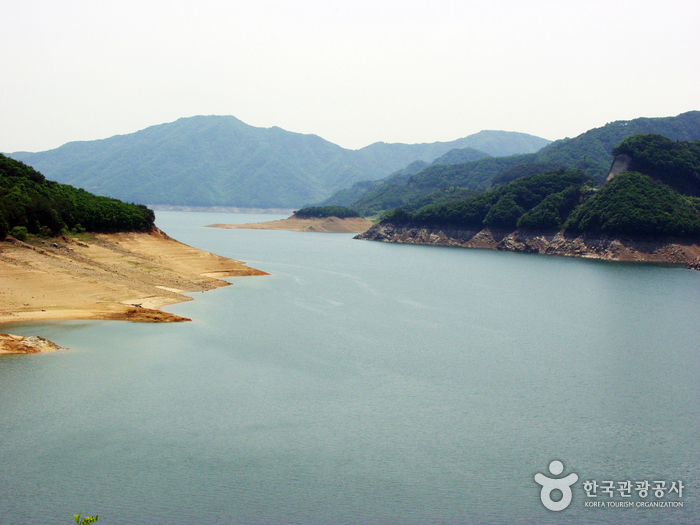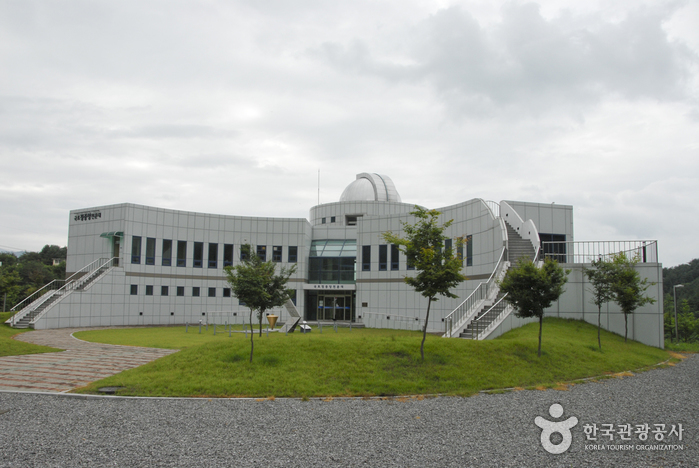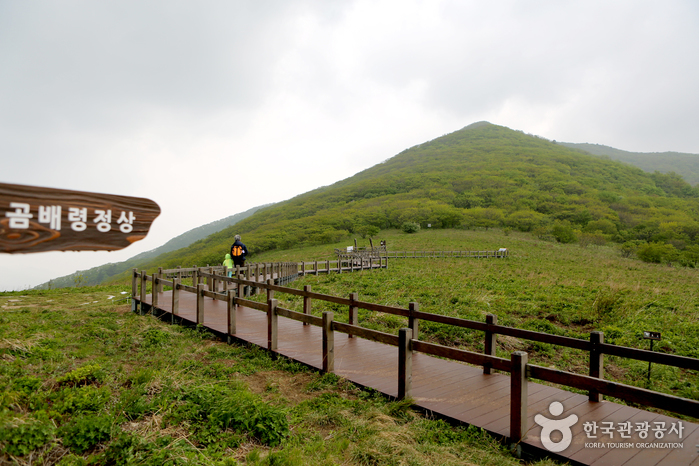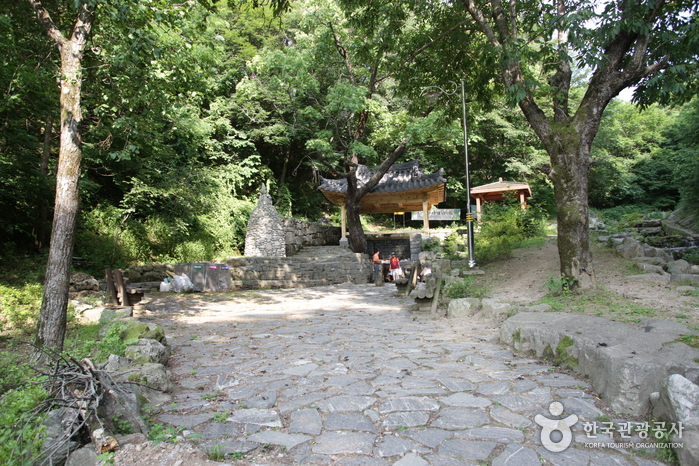Soyangho Lake (Yanggu Section) (소양호(양구))
15.3Km 2023-09-14
Seokhyeon-ri, Yanggu-gun, Gangwon-do
+82-33-480-7204
Soyangho Lake is a man-made lake that was created when Soyang Dam, the biggest rock-filled dam in Asia, was built in 1973. The lake is a hotspot for aquatic tourism and the lakeside road is an important route that connects Chuncheon and Yanggu. It is also a popular fishing spot as over 50 types of fishes can be found.
Center of Korea Observatory (국토정중앙천문대)
16.1Km 2021-08-12
127, Guktojeongjungang-ro, Yanggu-gun, Gangwon-do
+82-33-480-2586
The Center of Korea Observatory in Yanggu-gun is named for its location at the center of the Korean Peninsula. It is equipped with an 80-centimeter reflecting telescope. There is also an exhibition hall providing the most recent astronomy news, a planetarium showing the night sky, and a range of hands-on programs.
Shifting Cultivation Bom Bom Festival (화전민 봄봄축제)
16.1Km 2025-06-10
922-8 Gwangseok-ro, Duchon-myeon, Hongcheon-gun, Gangwon-do
+82-507-1433-8930
Shifting Cultivation Bom Bom Festival takes place in Bahoe Village, a small farming village in Hongcheon-gun, Gangwon State. It is a farming experince program that includes trekking along the crystal clear stream of Yongsogyegok Valley and an activities that provide insight on shifting cultivation and the farmers' lifestyles. Participants can enjoy a guided tour, take part in farming activities, pick crops, and try a local meal made from fresh ingredients.
Jeombongsan Mountain Gombaeryeong Pass (점봉산 곰배령)
16.4Km 2024-02-16
12 Gombaeryeong-gil, Girin-myeon, Inje-gun, Gangwon-do
This ecological area at the summit of Jeombongsan Mountain, situated 1,100 meters above sea level, spans approximately 16.5 hectares. It is often referred to as the "garden of heaven" due to the sheer diversity of plants and wildflowers in the area. The trail leading to the pass has a relatively gentle slope, making it accessible to all. It extends for 10.5 kilometers and typically takes about four hours to complete. Visitors need to make reservations to visit the pass.
Gwangchi Recreational Forest (광치자연휴양림)
18.5Km 2021-03-25
265, Gwangchiryeong-ro 1794beon-gil, Yanggu-gun, Gangwon-do
+82-33-482-3115
Gwangchi Recreational Forest is located near Gwangchiryeong Pass (alt. 800 meters). The pass encompasses waterfalls and valleys in a dense forest. Gwangchi Tunnel connects the areas of Yanggu and Inje to the East Sea, making the forest a great addition to travel itineraries. The recreational area serves as a retreat for residents and helps to support the local economy through tourism.
Yongneup Marsh of Daeamsan Mountain (Gangwon Peace Area National Geopark) (대암산 용늪 (강원평화지역 국가지질공원))
18.8Km 2024-02-22
1106-27 Geumgang-ro, Seohwa-myeon, Inje-gun, Gangwon-do
Daeamsan Mountain is a rugged peak composed of rocks, reaching an altitude of 1,304 meters from the foothills to the summit. Formed in the hilly area on the southwest slope, Yongneup Marsh harbors both northern and southern plant species, housing various rare flora and fauna amidst its exceptional natural landscape. Exploring the ecology of Yongneup Marsh is possible through guided tours, including the Seoheung-ri course (three times a day, five hours) and the Gaa-ri course (once a day, three hours). Identification is required, and reservations are mandatory, with the presence of guides accompanying visitors.
Bangdong Mineral Spring (방동약수)
19.4Km 2021-05-31
89-59, Bangdongyaksu-ro, Inje-gun, Gangwon-do
+82-33-460-2170
Bangdong Mineral Spring is located in Bangdong-ri in Girin-myeon. It is so renowned that it has been designated as one of the Great Mineral Springs of Korea. The water has a high content of carbon that makes it sparkle, and it tastes like Korean 7-up when sugar is added. In addition to carbon, the water also contains iron, manganese, and fluorine, making it effective in curing gastric problems and helping with digestion.
According to legend, there lived a simmani (ginseng digger) 300 years ago who, one day, dug a 60-year old wild ginseng in Bangdong-ri. Called yukgumandal, the ginseng was known to have been a great medicine of mystery. From the spot where the ginseng was dug came a mineral spring, which became today’s Bangdong Mineral Spring. The mineral spring has continued to attract people since the first day the ginseng was found and people who have drunk its water are said to have experienced various beneficial effects.
Bangdong Mineral Spring is also close to the woods, several valleys, and waterfalls.






 English
English
 한국어
한국어 日本語
日本語 中文(简体)
中文(简体) Deutsch
Deutsch Français
Français Español
Español Русский
Русский